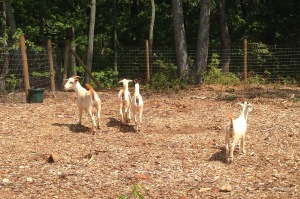“You are writing a blog about this Montessori “thing,” Patty, but what is the world is it?”
Me:

When I bring up that I work in a Montessori School, naturally people ask me what that is. While I have a whole new perspective now, especially after beginning my Teacher Training this past summer, I have to admit that it is really hard to put it into words.
While I am assuming people don’t want an hour-long dissertation, I find it challenging to give a quick “definition.” This educational method is so unlike what most of us experienced in school that there’s nothing to give people a frame of reference.
So, here I am, brain stuffed full of info, trying to determine how to best explain to people what it is that I do. While many schools and teachers have developed their own answer and I could certainly just copy theirs, I want to fully explore all that is Montessori and come up with my own. Although it may end up being very similar, the process will allow me to fully own what it is that I am doing.
So let’s get started.
While many people have heard the name Montessori, it kinda appears that it has recently popped out of nowhere and has become trendy. It even made headlines when Prince George began going to a Montessori School! While I am so glad that the name is getting “out there,” I think it’s important to point out that Montessori is a fully-researched method of educating a child, based on decades of studying how children learn, with about 100 years of implementation. It was created with the child in mind and it demands that we, first and foremost, do what is best for that child. In every way. (Like, for real. Not just say we are and then do what’s best for the adult because it’s easier or more convenient.)
While many descriptions focus on the method, I have come realize that other things, including its history and development, are crucial to understanding it, as well. While I will eventually get to discussing the method itself, I believe that in discussing the “why behind the what”, it will make even more sense. You’ll have the missing “frame of reference” to truly understand what is taking place in these schools.

This past summer, as I was sitting there on the porch reading my textbooks, I became very excited to create something different with this blog: I wanted to tell these stories that no one tells. (I am, by nature, the type who does things differently, so no surprise here!) They are fascinating and they breathe life into the philosophy. They give it a “human” quality.
But all of this study caused me to explore my own preconceived notions and past experiences concerning school. I had to confront some of the things that I did or didn’t learn during my education. Some things made me really mad. So if you ask about my “why behind the what,” I can now fully answer that question. It’s difficult to want to share that, though, lest I seem like a raving lunatic up on a soapbox, but I do think it is important to eventually share it so you can understand why I am so passionate about what I am doing.
When considering all of this, it brings me to tears because I truly feel that now I have the tools to give a child the possibility to become his or her greatest self. In all my prior years of teaching, I never felt that way. I will go out on a limb here and say probably not one time.
So, in saying that, how could someone possibly understand what in the world I mean by it if I don’t start with Montessori’s “why behind the what?”
Well, then, that’s what we’ll do and the definition will evolve from there.
Until next time…..
Peace, Love, and Boldness,
Patty
